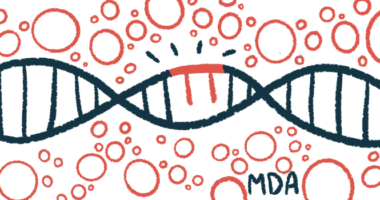2 MDA research grants will tackle DMD gene therapy safety issues
The nearly $400K in awards aims to prevent immune system reactions

In a bid to further understand and solve potential gene therapy safety concerns in Duchenne muscular dystrophy (DMD), the Muscular Dystrophy Association (MDA) has awarded two research grants totaling nearly $400,000.
The funding will allow the awarded researchers and their teams to develop new strategies to prevent immune system reactions against gene therapy in DMD.
Winning the grants are Jeffrey Chamberlain, PhD, a professor at the Institute for Stem Cell & Regenerative Medicine at the University of Washington, and Carrie Miceli, PhD, co-director of the Center for Duchenne Muscular Dystrophy at the UCLA School of Medicine.
“With these grants, we continue our longstanding collaboration with industry and academic partners to identify bottlenecks and ways to safely translate gene therapies for neuromuscular disorders,” Sharon Hesterlee, PhD, chief research officer at MDA, said in a press release.
2 researchers win funding for 2 years
The awards result from last year’s dedicated MDA Gene Therapy Summit, in which global experts discussed safety issues and challenges in translating such treatments to the clinic. In organizing the event, the MDA noted that it had invested more than $125 million over the previous two decades in the development of gene therapies for for neuromuscular diseases.
For these new awards, the nonprofit is focusing on Duchenne, the most common type of MD.
“These studies by Dr. Chamberlain and Dr. Miceli help to enhance understanding and mitigate immune response safety issues associated with DMD gene therapies,” Hesterlee said.
People with DMD lack a functional dystrophin, an important protein for muscle health and function, due to mutations in the DMD gene. This leads to cell damage during muscle contraction and results in progressive muscle wasting and weakness.
Gene therapies now in development for DMD deliver a transgene that codes for a shortened but functional dystrophin. The gene is delivered to muscle cells using an adeno-associated virus, or AAV, as a vector. AAVs are commonly used in gene therapy applications because they are easy to manipulate in a laboratory and are engineered to not cause serious illness in people.
Preclinical studies and early clinical trials have yielded promising results, but collaborative efforts between companies developing DMD gene therapies revealed safey challenges of using AAV-based approaches.
A particular challenge is the risk of triggering a serious immune response. This has led to the exclusion of 10% to 15% of all DMD boys from gene therapy trials, according to Chamberlain.
Chamberlain’s team has developed a computational method that predicts regions in an engineered dystrophin gene that may trigger an immune response, and how to redesign vectors to solve this problem.
“Grants from MDA have helped us to understand the function of dystrophin, followed by the design of dystrophin gene replacement therapies, and their testing in animal models,” Chamberlain said.
In the two-year project, awarded $200,000, the researchers will continue these early studies and aim to develop new dystrophin-based gene therapies to be used in clinical trials.
“We are deeply appreciative of the ongoing support the Muscular Dystrophy Association has provided our lab over the years,” Chamberlain said. “This most recent funding will help us design the next generation of dystrophin gene replacement therapies that avoid transgene-triggered immune responses, allowing more Duchenne muscular dystrophy patients to be candidates for treatment.”
These studies by Dr. Chamberlain and Dr. Miceli help to enhance understanding and mitigate immune response safety issues associated with DMD gene therapies.
The project led by Miceli, awarded $199,962 for two years, also will investigate the role of the immune system.
Miceli and her team will harness the power of single cell and single nuclei sequencing technologies to assess response to gene therapy. Specifically, they will use muscle biopsies to look at the expression (activity) of the therapeutic gene, along with immune response and muscle health.
“We are grateful to the Muscular Dystrophy Association for this funding, which lets us track the effects of micro-dystrophin gene therapy at single cell resolution by sequencing individual nuclei isolated from post-treatment muscle biopsies. Our studies promise to teach us about immune response to gene therapy, durability of micro-dystrophin expression and identify druggable pathways for improving safety and efficacy of gene therapies,” Miceli said.







